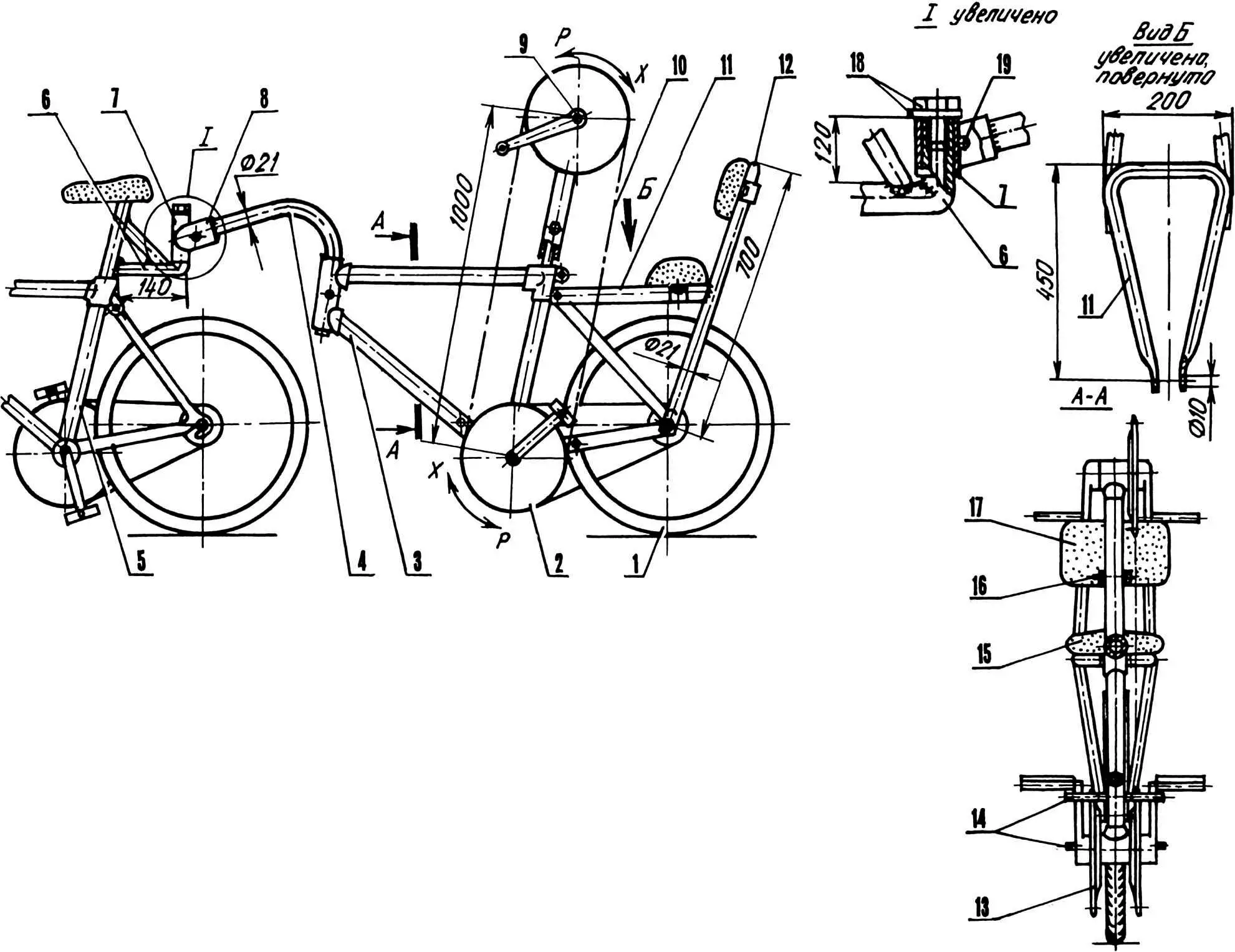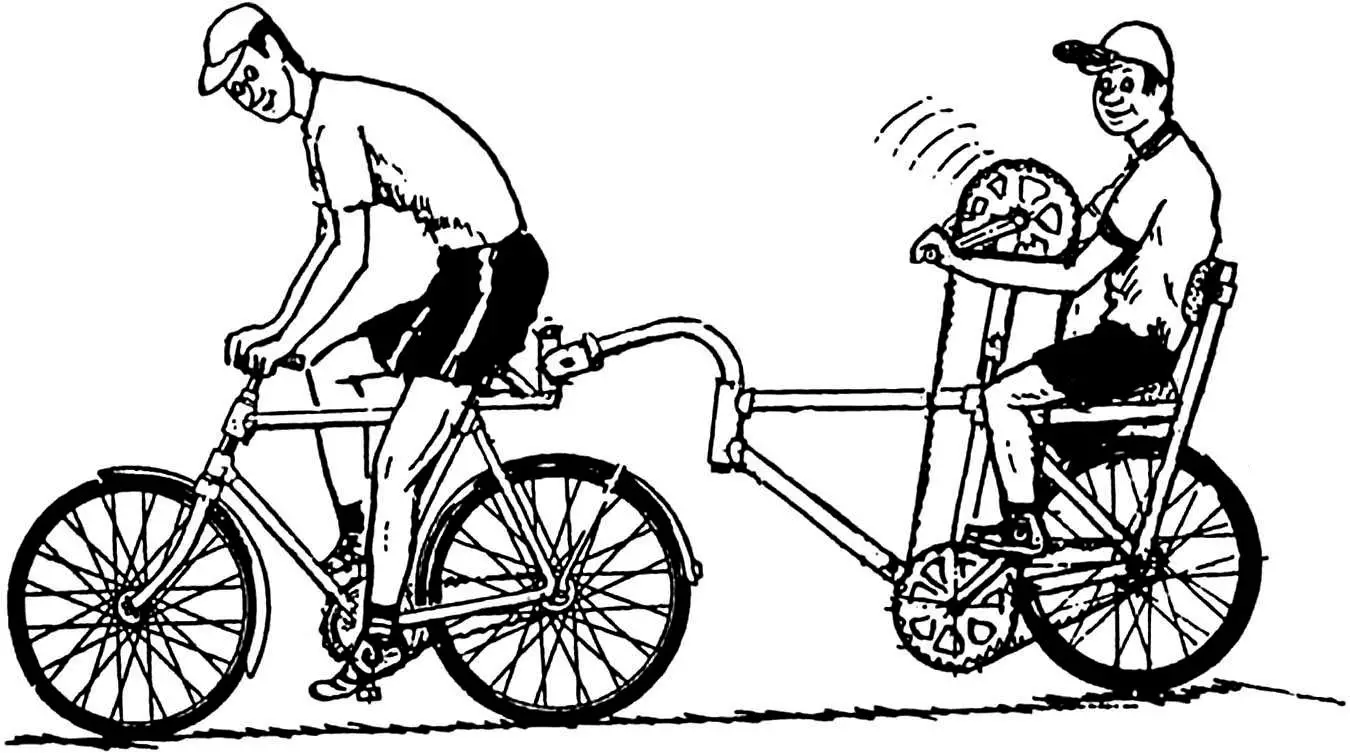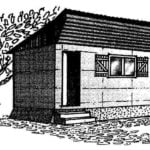Many outdoor enthusiasts prefer cycling trips to other forms of short travel, such as hiking or driving.
Walking allows you to fully enjoy the beauty of nature and take in the surroundings at your own pace, but unfortunately, only in the immediate area.
Driving, on the other hand, means you interact more with the road than with nature — it’s hard to take your eyes off it, even in an SUV.
Motorcycle rides could be a good compromise, but their noise scares away wildlife and birds quickly flee the area.
In this case, another two-wheeled friend can save the day — the bicycle.
And for riding together with a companion, there’s no need to have a second bike. It’s better to build a trailer — but not an ordinary one. A trailer with an independent drive system, both foot and hand powered. This kind of tandem makes riding easier — your partner can assist at any moment — and it’s easier to talk along the way since you’re always close by.
This is the concept behind the single-wheeled passenger trailer presented here.
Its foundation is a frame from an old road bicycle, used without any modifications. The drivetrain also comes from the same bike.

1 — wheel; 2 — additional pedal-drive sprocket; 3 — frame; 4 — tow bar; 5 — towing bicycle; 6 — bracket; 7 — hitch hub (3/4″ tube); 8 — clamp (30×4 mm steel strip); 9 — additional hand drive (bottom bracket with seat tube section, sprocket, crank arms); 10 — additional drive chain; 11 — seat frame; 12 — seat post; 13 — primary pedal drive (bottom bracket, sprocket, crank arms, chain); 14 — pedal crank travel limiters (Ø10 rod); 15 — seat; 16 — M6 locking bolt for hand-drive post; 17 — backrest; 18 — M20 safety bolt with washer; 19 — hitch axle (Ø10 rod)
The trailer’s hitch is similar in concept. But instead of half-axles, a solid axle is welded tangentially to the hub. The hub itself is secured against accidental disconnection from the bracket hook with an M20 bolt and washer. The bolt is screwed into a pre-threaded hole in the bracket. The wheel — taken from the same old bike — is a rear one and matches the towing bike in diameter, which is ideal. The braking mechanism has been removed from the wheel, so the towing bike is equipped with an additional hand brake.
The combination of pedal and hand drive is similar to the dual-drive system described in Modelist-Konstruktor magazine, issue No. 5, 2000.
A second sprocket identical to the original is mounted on the left side of the pedal drive shaft. The crank arm is rotated 180° and aligned with the other one.
The hand drive — including the bottom bracket, sprocket, cranks, chain, and a portion of the seat tube — also comes from a different old road bike. (It is important that the sprocket matches the pedal one). It’s mounted to the trailer frame via the seat post, slipped on using a cut section of seat tube. To prevent rotation, a through-hole is drilled in the tube and post, and secured with an M6 locking bolt. One of the crank arms (right side) is also rotated 180°.
The hand-drive sprocket is linked to the pedal-drive’s second sprocket using an extended chain. During installation, the cranks are set 180° out of phase — the pedal cranks point upward, while the hand cranks point downward.
Crank travel limiters are installed on the lower frame tube and the trailer’s chainstay. This is because the cranks do not rotate continuously while riding. The pedal cranks push forward (power stroke), and the hand cranks pull back. The return stroke — resetting the cranks — is done by simultaneously moving hands and feet in the opposite direction.
At the former luggage rack location, a curved seat frame is mounted and welded at its backbone to the central portion of the seat post’s arc. The ends of the frame — made from thin-walled 1/2″ pipe — are flattened and drilled: the frame has holes for an M8 bolt, and the post has holes matching the wheel axle diameter. The post is secured to the axle using nuts.
A soft cushion is mounted on the frame, and a matching backrest is attached to the post.
During off-road trips, especially uphill, the power of a single rider may not be enough. In such moments, the passenger becomes an effective “pusher”, supplying extra power not only with their feet, but also hands — since steering is handled by the lead cyclist.
Alternatively, the passenger can take on full “engine” duties, leaving the lead rider to focus solely on navigation. And of course, when someone gets tired, you can always swap places.
V. GAVRILOV



